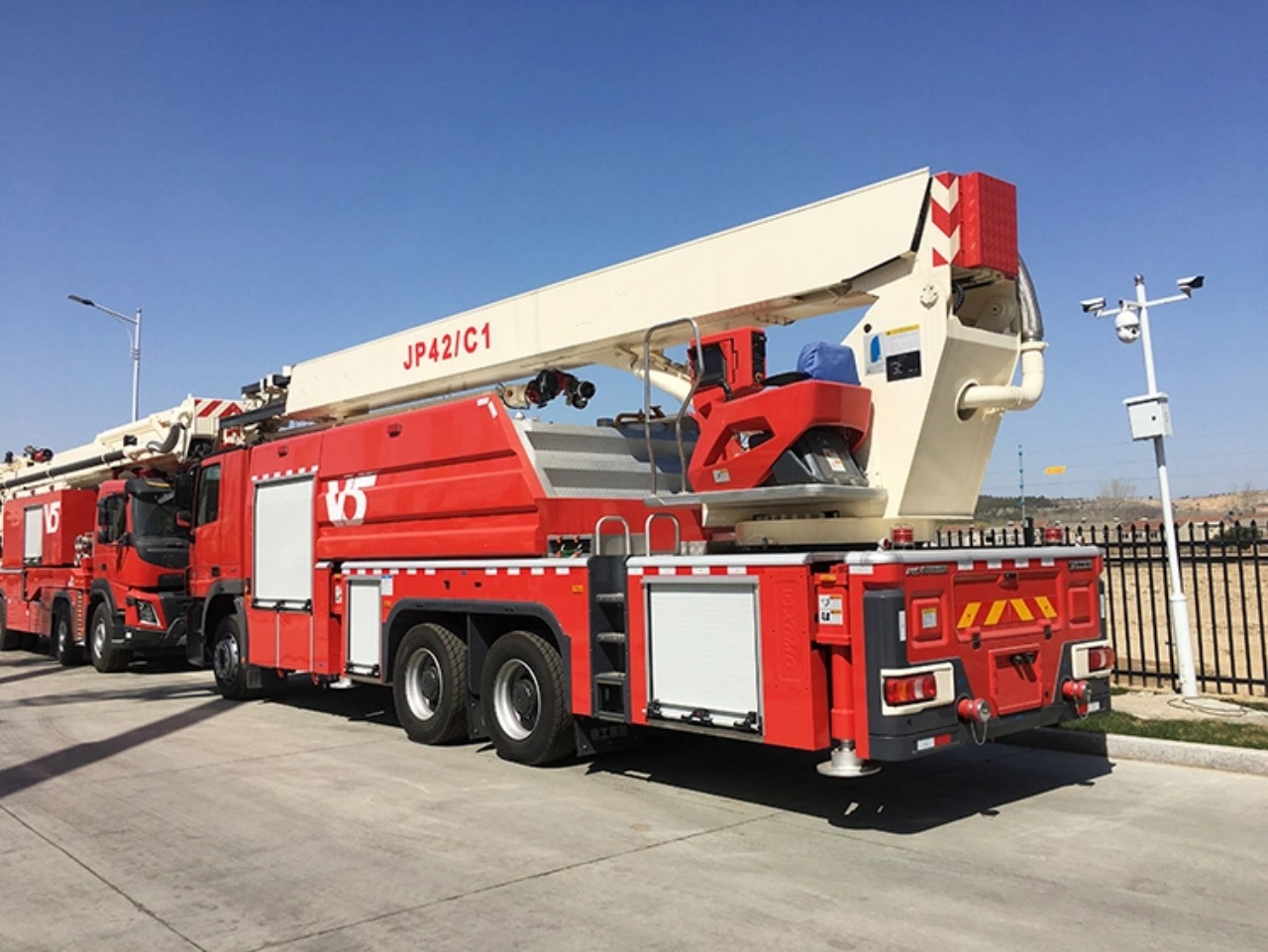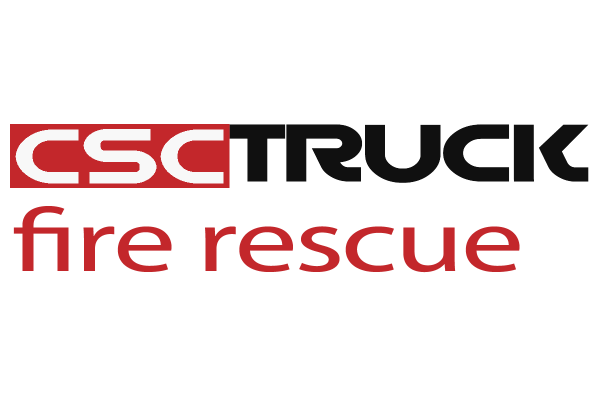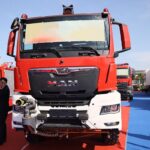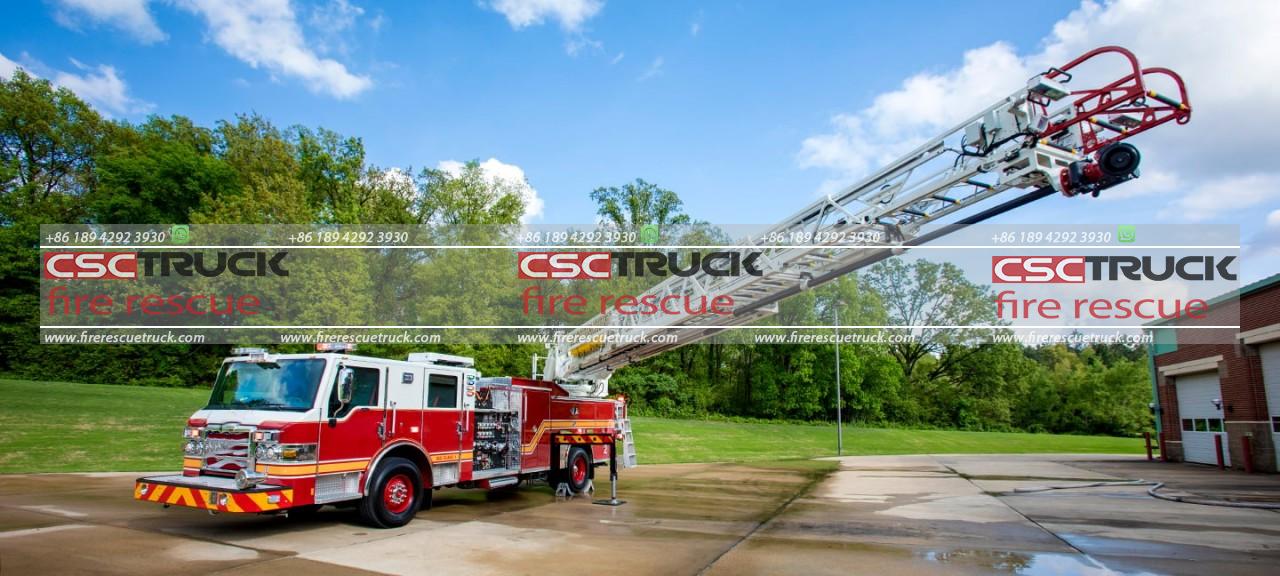When seconds count during an emergency in high-rise buildings or hard-to-reach areas, fire departments rely on advanced equipment designed for both firefighting and rescue operations. Among the most critical tools in their arsenal is the extendable ladder fire truck—a versatile, high-access vehicle capable of reaching towering heights, navigating confined spaces, and delivering lifesaving performance. This article explores the vital role of extendable ladder fire trucks in modern fire services, their design features, operational advantages, and the technology that enhances their performance in high-access firefighting and rescue scenarios.
Introduction to Extendable Ladder Fire Trucks
Extendable ladder fire trucks, often referred to as aerial ladder trucks, are specialized firefighting vehicles equipped with a telescoping or articulating ladder mounted on a rotating turntable. These ladders can extend vertically and horizontally, providing firefighters with access to elevated floors, rooftops, and other areas that would otherwise be unreachable with conventional ground ladders.
They are integral to urban firefighting operations, especially in cities with dense populations and high-rise buildings. The ability to deploy an extendable ladder quickly and accurately allows for both the extinguishing of fires at height and the rapid evacuation of individuals trapped above ground level.
Key Components and Features
An extendable ladder fire truck is more than just a ladder on wheels. It is a sophisticated piece of machinery built with a combination of firefighting, rescue, and safety technologies.
1. Telescopic or Articulating Ladder
The primary feature is a ladder that can extend from 20 meters (65 feet) to over 100 meters (328 feet) in high-end models. These ladders may be straight (telescopic) or include joints (articulated) to allow maneuvering over obstacles like rooftops or power lines.
2. Turntable Base
The ladder is mounted on a turntable that allows it to rotate 360 degrees, enabling precise positioning without moving the truck.
3. Firefighting Water Delivery System
Many ladder trucks are equipped with an integrated waterway system, which includes a monitor or nozzle at the ladder’s tip. These can deliver water or foam at high pressure, turning the ladder into an elevated water cannon.
4. Rescue Basket or Platform
Modern units often include a rescue basket at the ladder tip, which allows firefighters to safely retrieve individuals or carry out aerial operations such as ventilation or window entry.
5. Outriggers and Stabilizers
To ensure stability during ladder deployment, hydraulic outriggers extend from the truck to create a stable base, even on uneven terrain.
6. Control Systems
Advanced control panels allow for precision operation. Some include remote control, automated ladder positioning, and safety sensors to prevent overextension or dangerous angles.
Applications in Firefighting and Rescue
Extendable ladder fire trucks are multifunctional, offering solutions to a wide variety of emergency challenges.
1. High-Rise Firefighting
In fires above the reach of traditional ground ladders, these trucks allow firefighters to access windows, balconies, and rooftops. Water delivery systems allow them to suppress flames directly from the ladder’s tip.
2. Urban Rescue Operations
People trapped in high buildings during a fire, earthquake, or other emergencies can be rescued via the ladder or basket. This is especially critical when stairwells are impassable or elevators are shut down.
3. Ventilation and Entry
Firefighters can use the ladder to gain entry into upper levels of a building or to ventilate by breaking windows or opening rooftops to release heat and smoke.
4. Aerial Surveillance
The elevated position provided by the ladder can be used for visual assessment of large fire scenes, coordination with ground teams, and spotting secondary hazards.
Benefits of Using Extendable Ladder Fire Trucks
The implementation of extendable ladder trucks offers several advantages over traditional firefighting tools:
- Enhanced Access: With their significant vertical and horizontal reach, they allow access to locations inaccessible by other means.
- Speed and Efficiency: Deployment is rapid, which is critical when lives are at risk.
- Multi-Purpose Functionality: A single vehicle can perform a variety of tasks—fire suppression, rescue, ventilation, and command observation.
- Improved Safety: The ability to perform aerial operations without requiring firefighters to climb unsecured ground ladders reduces risk.
- Water Efficiency: Elevated monitors are highly effective in directing large volumes of water to specific locations, minimizing water damage and improving fire control.
Technological Innovations
Recent advancements have transformed extendable ladder fire trucks into even more capable machines.
- Computerized Control Systems: Automated positioning and monitoring systems reduce operator error and improve efficiency.
- GPS and GIS Integration: Navigation and scene analysis are enhanced with real-time data.
- High-Strength, Lightweight Materials: Modern ladders are made from aluminum or composite materials, reducing truck weight while increasing durability and reach.
- Thermal Imaging and Cameras: These tools, mounted on the ladder or platform, help identify hot spots or locate victims in smoke-filled areas.
- Hybrid and Electric Powertrains: Some manufacturers now offer hybrid or electric ladder trucks to meet sustainability goals and reduce emissions during urban operation.
Considerations for Deployment
While highly effective, extendable ladder trucks come with operational considerations:
- Cost: These vehicles are among the most expensive in a fire department’s fleet, often costing over $1 million per unit.
- Training Requirements: Specialized training is required to safely and effectively operate the ladder and its integrated systems.
- Street Accessibility: Due to their size, maneuvering in narrow streets or older urban layouts can be challenging.
- Maintenance: The mechanical and hydraulic systems require regular inspections and upkeep to remain operational and safe.
Conclusion
The extendable ladder fire truck stands as a symbol of modern firefighting’s evolution, combining mechanical engineering, safety systems, and operational efficiency to tackle emergencies at heights. Whether navigating the complex environment of a high-rise district or overcoming obstacles in industrial areas, these trucks are invaluable in saving lives and property.
As urban centers grow vertically and building complexity increases, the demand for high-access rescue and firefighting solutions will only intensify. Fire departments that invest in and maintain extendable ladder trucks are better equipped to meet this challenge, safeguarding their communities with the best tools available.
In emergencies where every second counts, the extendable ladder fire truck truly rises to the occasion—literally and figuratively.











